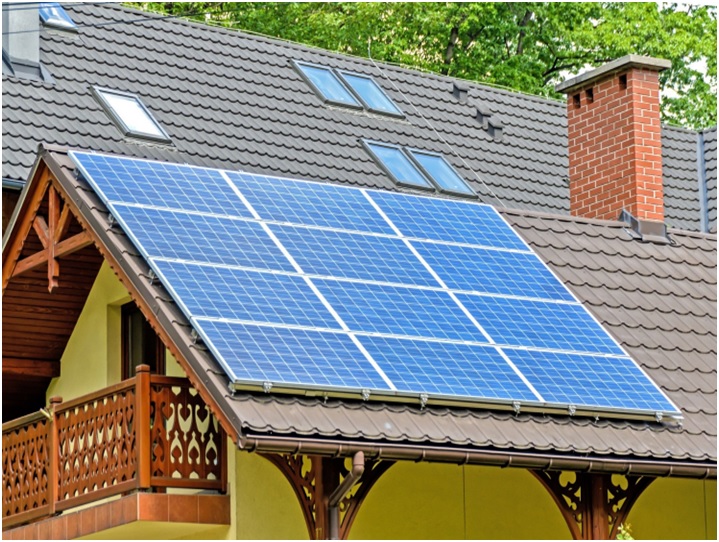Important Updates Property Owners Should Know About Title 24
4 min read
California’s Title 24 of the State Building Energy Efficiency Standards is one of the most onerous building regulations in the United States. California has energy savings regulations in its construction and is pursuing some aggressive net-zero building goals, as the state is home to over 39 million people.
By 2020, the state of California wants all new residential construction to be net-zero. By 2030, they want all non-residential buildings to meet the same standard. California is working to meet these ambitious objectives, and it continues to update and improve its Title 24 building code.
Title 24 is a California state code that establishes energy standards for new construction in the state. The California Energy Commission updates Title 24 every three years. These revisions generally include more stringent energy requirements for new buildings.
Surprisingly, while Title 24 only applies to buildings in California, many of the established rules and procedures have been adopted by other states. These are attempting to make inroads into developing more long-term sustainable codes and processes, such as those implemented in California.
The newest version of Title 24 was created in 2019. Several significant upgrades to the building envelope were made as a result of the modification. Here are some essential changes your roofing company in Sacramento should know regarding Title 24: Code in California.
New Energy Design Rating (EDR)
The EDR is a metric that compares how energy efficient a facility is concerning the amount of energy it uses versus the amount of energy it generates. The EDR is the ratio of a home’s energy consumption to that of a typical house. An EDR zero refers to a net-zero home. This is how California’s authorities keep track of their progress in achieving net-zero goals.
The new construction’s energy efficiency (without renewable energy) must be less than or equal to the old building’s EDR (rigid structure), according to 2019 regulations. Furthermore, the total proposed EDR (renewable energy) score must not exceed the overall typical design EDR score.
Removal of the solar-efficiency trade-off
PV solar or other renewable technologies may be used as a trade-off against strong attics and walls in prior versions of Title 24. PV solar alone will not result in a net energy gain. Additionally, high-performance roofs and walls utilized with PV solar can produce a net energy gain.
Separation of single family and multi family regulations.
In 2019, Title 24 divided single-family and multi-family regulations into two separate rules to better reflect local concerns. At present, the criteria are comparable; however, eventually, multi-family will be a distinct category from residential and non-residential.
Hydrofluorocarbons have been phased out of spray foam insulation.
Spray foam insulation sold in California was to be produced without any hydrofluorocarbons (HFCs) as of January 1, 2020. This common chemical is used as a blowing agent. This goal is to assist California in meeting its climate change goals.
Spray foam that contains HFCs can still be used and sold as long as it was produced before January 1, 2020. The distributor didn’t purchase it from the manufacturer after that date.
Quality Insulation Installation (QII) is now a prescriptive requirement.
To minimize the chance that insulation will be installed incorrectly, resulting in reduced performance, Title 24 (https://www.title24express.com/what-is-title-24/) requires QII as a prescriptive requirement in 2019. It’s critical to include a QII in the contractor scope since a HERS Rater will be checking the job.
Horticulture.
Increasing efforts will be made to minimize energy and water usage by farmers and producers. Requirements will be updated for
- Cannabis
- Basil
- Tomatoes
- Roses
- Microgreens
- Lettuce
- Vegetable transplants
Title 24 mandates that irrigation be done correctly and efficiently. Irrigation methods must meet Title 24 standards, such as conserving water and energy while producing the highest quality plants. This is to be accomplished through careful management of weather data and tight scheduling.
Lighting control for non-residential buildings
Occupancy sensors are used to turn on or off lights in commercial and office buildings (https://www.ecmag.com/section/green-building/californias-title-24-update). One or more occupancy sensors will be required depending on the size of an office or business facility. When an employee leaves their desk, for example, the lights will turn off to save energy.
If an employee works overtime, it’s feasible that the lighting control has been manually overridden to turn off lights after hours. The most efficient sensor to meet and exceed these requirements will detect movement and sound, and light levels.
With the addition of sound as well as movement detection, occupancy becomes more precise. A light sensor will also be used to regulate the brightness of a room, with higher levels required when natural light isn’t sufficient. The lights will be switched off if there is enough.
Refrigeration system in a non-residential environment
Changes in building energy codes and requirements will impact the efficiency of refrigeration systems in warehouses, commercial kitchens, and buildings. Temperature sensors with a wide range of temperatures and settings will make this change simpler.
Efficiency of non-residential computer rooms
The following two requirements are especially important for computer rooms with heavy loads (30 watts per square foot or more).
When selecting a roofing company for your project in California, it is essential that the contractor understands Title 24 updates. Doing this ensures compliance and saves money and time.






